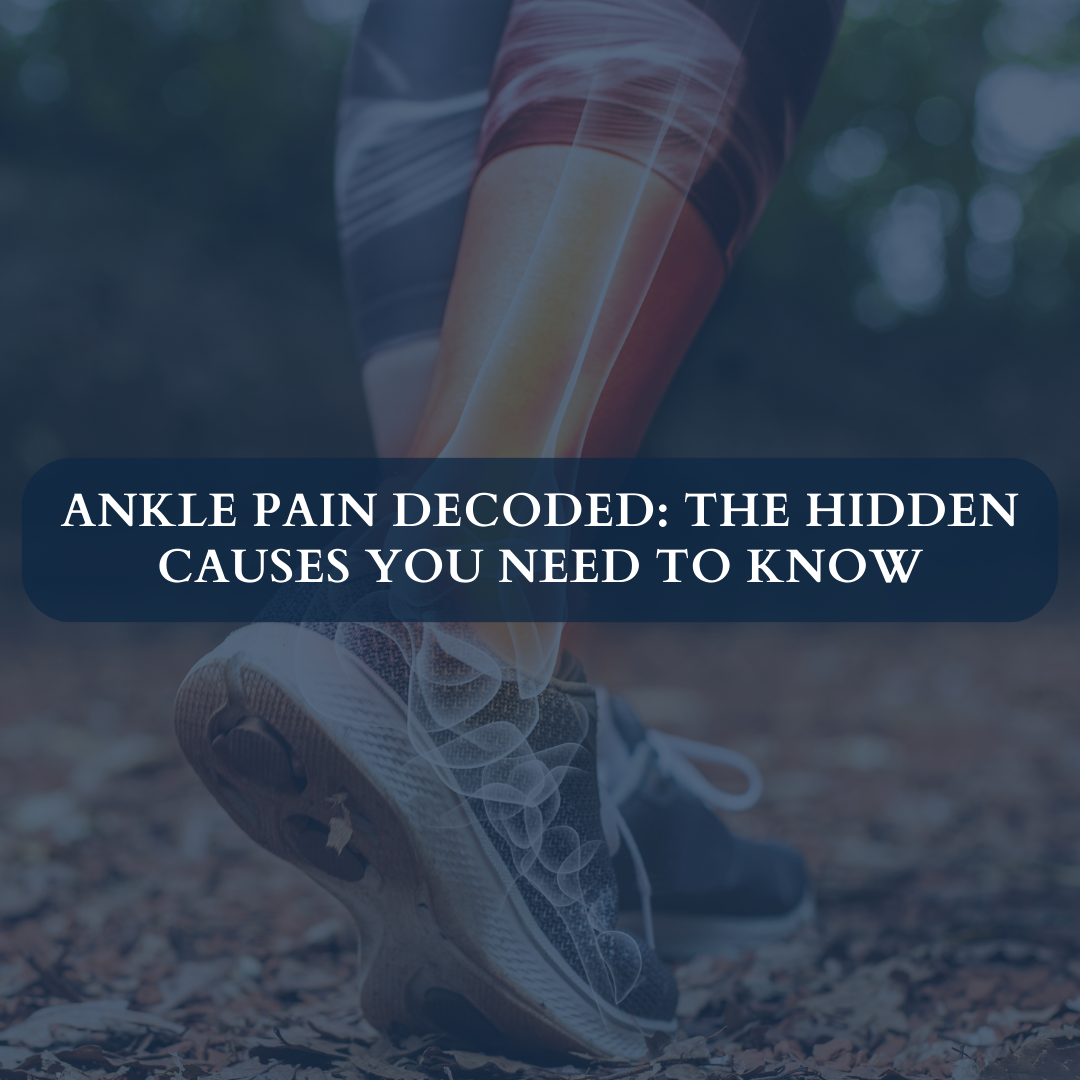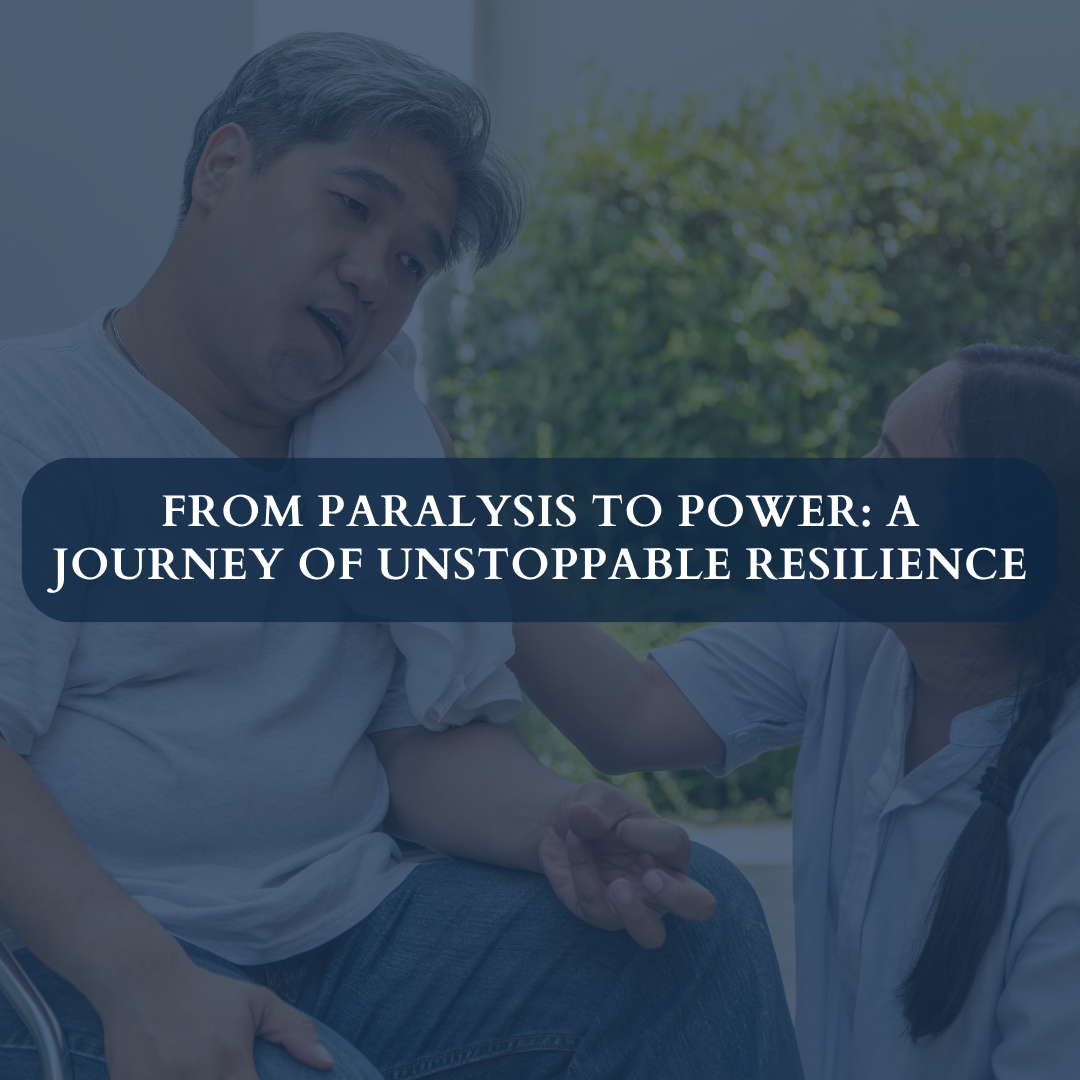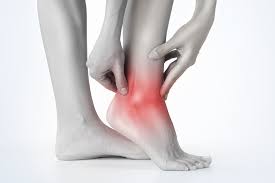Ankle pain can be a debilitating experience, limiting mobility and disrupting daily activities. While most people attribute it to sprains or strains, the underlying causes can be multifaceted. In this comprehensive guide, we’ll delve deep into the hidden causes of ankle pain that you might not be aware of. By understanding these factors, you can take proactive steps towards alleviating discomfort and ensuring long-term ankle health.
Understanding the Anatomy of the Ankle
The ankle is a complex joint responsible for supporting body weight and facilitating various movements, such as dorsiflexion and plantarflexion. Comprising three primary bones—the tibia, fibula, and talus—the ankle joint is surrounded by a network of ligaments, tendons, and muscles that provide stability and mobility. The tibia, or shinbone, forms the main structure of the ankle, while the fibula, located alongside the tibia, offers additional support. The talus sits between these bones, forming the connection with the foot. Ligaments, such as the anterior talofibular ligament and calcaneofibular ligament, stabilize the joint and prevent excessive movement. Tendons, including the Achilles tendon and peroneal tendons, facilitate movement and connect muscles to bones. Muscles like the gastrocnemius and soleus muscles enable plantarflexion, allowing you to point your toes. Understanding this intricate anatomy is crucial for recognizing potential injuries and conditions affecting the ankle joint.
Common Misconceptions: More Than Just Sprains
In the realm of ankle pain, many individuals mistakenly assume that sprains are the sole perpetrator. However, this common misconception oversimplifies the complexities associated with ankle discomfort. While sprains, characterized by ligamentous injuries due to twisting or rolling motions, are indeed prevalent, they represent just a fraction of potential causes. Other significant contributors include overuse injuries stemming from repetitive activities, stress fractures resulting from repetitive impact, and tendonitis involving inflammation of the tendons surrounding the ankle joint. Additionally, underlying medical conditions like arthritis, both osteoarthritis and rheumatoid arthritis, can instigate pain, stiffness, and swelling in the ankle region. Ignoring persistent discomfort or attributing it solely to a minor injury can mask more profound issues, delaying appropriate treatment and exacerbating symptoms. Therefore, broadening our understanding beyond mere sprains is pivotal in accurately diagnosing and addressing the diverse causes of ankle pain.
Overuse Injuries: Pushing Your Limits
Overuse injuries result from repetitive strain on the ankle’s muscles and tendons, often caused by intense or prolonged activities. Common examples include Achilles tendinitis and posterior tibial tendinitis. These conditions develop gradually, with symptoms like pain, swelling, and stiffness. Recognizing the early signs is crucial; modifying activities, incorporating adequate rest, and engaging in targeted stretching can prevent worsening symptoms. It’s essential to strike a balance between staying active and allowing sufficient recovery to avoid pushing your physical limits, ensuring the longevity of ankle health and preventing persistent discomfort.
The Impact of Footwear: Choosing the Right Support
Selecting appropriate footwear plays a pivotal role in maintaining optimal ankle health. Ill-fitting shoes, particularly those lacking adequate support or cushioning, can disrupt biomechanics, leading to increased stress on ankle joints and ligaments. High heels, for instance, alter the body’s alignment, placing excessive pressure on the ankles and increasing the risk of sprains and discomfort. Conversely, choosing shoes with proper arch support, cushioning, and a snug fit can enhance stability, reduce strain, and promote natural foot alignment. Prioritizing supportive footwear tailored to individual needs can mitigate ankle pain, improve mobility, and prevent long-term complications.
Arthritis: A Silent Aggressor
Arthritis silently infiltrates the ankle joints, causing inflammation, stiffness, and debilitating pain. Osteoarthritis, commonly associated with wear and tear, deteriorates cartilage, leading to friction between bones. On the other hand, rheumatoid arthritis triggers the body’s immune system to attack its tissues, including the ankle joints. Both forms disrupt normal joint function, limiting mobility and impairing quality of life. Often overlooked, arthritis in the ankles can progress silently, exacerbating symptoms over time. Early detection through diagnostic tests and imaging studies is crucial for timely intervention. Management strategies may include medication, physical therapy, and lifestyle modifications to alleviate pain and preserve joint integrity.
Traumatic Injuries: Beyond the Surface
In the realm of ankle injuries, traumatic injuries like fractures and dislocations demand attention. These injuries often result from accidents, falls, or direct impacts, causing immediate pain, swelling, and functional impairment. Unlike superficial injuries, traumatic ankle injuries penetrate deeper, affecting the bones, ligaments, and surrounding tissues. Prompt medical evaluation is paramount to assess the extent of damage accurately. Imaging studies, such as X-rays or MRIs, aid in diagnosis, guiding appropriate treatment strategies ranging from immobilization to surgical intervention. Neglecting these injuries can lead to long-term complications, including chronic pain, instability, and decreased mobility. Thus, recognizing and addressing traumatic injuries promptly is crucial for optimal recovery and ankle health.
Nerve Compression: Unraveling the Mystery
Nerve Compression, specifically tarsal tunnel syndrome, unveils a mysterious source of ankle pain. This condition arises when the posterior tibial nerve faces compression, leading to discomfort, numbness, and tingling along the inner ankle and sole of the foot. It’s akin to carpal tunnel syndrome but affects the lower extremities. Identifying the root cause, which can range from injuries to structural abnormalities, is crucial. Conservative treatments such as rest, anti-inflammatory medications, and physical therapy can often alleviate symptoms. Recognizing and addressing nerve compression promptly is essential to prevent long-term complications and restore optimal nerve function.
Circulatory Issues: The Lesser-Known Culprit
Circulatory issues, often an overlooked cause of ankle pain, stem from conditions like peripheral artery disease (PAD) or venous insufficiency. These disorders compromise blood flow, resulting in discomfort and swelling. Peripheral artery disease restricts blood supply to the extremities, causing pain, while venous insufficiency hinders proper blood return, leading to swelling. Identifying signs such as persistent pain and swelling is crucial for early diagnosis. Seeking medical evaluation helps unravel the mystery behind ankle discomfort, ensuring timely intervention and prevention of potential complications associated with circulatory issues. Prioritizing circulatory health is integral to comprehensive ankle pain management.
Lifestyle Factors: Making Informed Choices
Lifestyle plays a pivotal role in ankle health. Obesity places undue stress on ankle joints, increasing the risk of pain and discomfort. Smoking hampers healing and circulation, further exacerbating issues. A balanced diet rich in nutrients is crucial for overall joint health. Adopting a healthy lifestyle by maintaining a healthy weight, quitting smoking, and prioritizing nutrition can significantly reduce the likelihood of ankle pain. These informed choices not only promote general well-being but also contribute to the prevention of ankle-related complications, ensuring a more active and pain-free life.
Prevention Strategies: Taking Proactive Measures
In the realm of prevention strategies, taking proactive measures is paramount to safeguarding ankle health. Begin by incorporating regular strength training exercises that focus on ankle stability and flexibility, enhancing muscle strength around the joint. Option for footwear that provides adequate support and cushioning, ensuring proper alignment and reducing undue stress. Engage in flexibility exercises, such as stretching routines, to maintain optimal range of motion and prevent stiffness. Additionally, listen to your body’s signals, avoiding overuse and allowing adequate rest periods between activities. Lastly, maintain a balanced lifestyle, emphasizing proper nutrition and hydration, to support overall joint health and resilience.
Conclusion
Ankle pain is a common complaint that can stem from various underlying causes, extending beyond the typical sprains and strains. By understanding the hidden factors contributing to discomfort, you can take proactive measures to alleviate symptoms and promote long-term ankle health. Whether it’s modifying your activities, investing in supportive footwear, or seeking timely medical intervention, prioritizing ankle health is crucial. Remember, early detection and intervention are key to minimizing pain, restoring function, and enhancing your quality of life. Stay informed, stay proactive, and prioritize your well-being.
Ready to explore your options for chiropractic and physiotherapy? Contact SwastyaPhysio today to schedule a consultation and discover the best path to your wellness journey. We’re here to support your health every step of the way.
Banaswadi | HBR layout | Kalyan Nagar | Kammanahalli | Horamavu | Hennur





